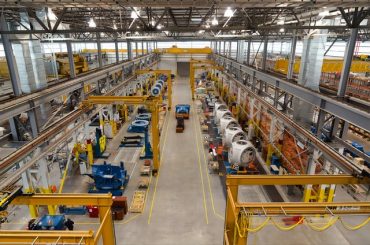
According to the FWHA, there is a need for early-stage research to support emerging advances in artificial intelligence to help solve complex issues in highway transportation.
A new Federal Highway Administration (FHWA) program aims to transform highways with artificial intelligence. Some of the areas where the technology is expected to play a future role include improved safety, environmental mapping, bridge capacity insights, and smart parking.
The Exploratory Advanced Research (EAR) Program is currently soliciting proposals up until December 5. It will then award contracts or engage in cooperative agreements. It is looking for research projects that “could lead to transformational changes and truly revolutionary advances in highway engineering and intermodal surface transportation in the United States.”
Additionally, the call for proposals indicated that “this program will support scientific investigations and studies that advance the current knowledge and state-of-the-art in the sciences and technologies employed in the planning, design, construction, operation, maintenance, and management of the nation’s highways. Strategically, this research will enable and expedite the development of revolutionary approaches, methodologies, and breakthroughs required to drive innovation and greatly improve the efficiency of highway transportation.”
See also: The Ultimate Mobile Devices: Cars Connected at the Edge
Artificial intelligence for highway transportation
According to the FWHA, there is a need for early-stage research to support emerging advances in artificial intelligence to help solve complex issues in highway transportation. Accordingly, the FHWA EAR Program is now seeking to demonstrate the potential of untried advances in AI for solving nationally critical questions in highway transportation.
Examples that FHWA found where AI applications have the potential to solve critical highway transportation issues and challenges include:
Safety and Mobility
Vulnerable road users – Use of AI to analyze data or develop solutions focusing on vulnerable road user safety, especially for understudied topics such as safety outside urban settings or in traditionally underserved communities.
Pedestrian, cyclist, and micro-mobility detection – Use of machine vision and other AI techniques to analyze pedestrians, cyclists, and micro-mobility device movement on roadways and in intersections to improve signal performance for these modes for all travelers, including people using assistive devices such as wheelchairs.
Pedestrian wayfinding – Use of AI to highly automate the dynamic mapping of the pedestrian environment, including sidewalks, crosswalks, pathways, transit centers, and other public and private locations.
Bridge strikes – Use of AI, including video analytics, to increase the understanding of root causes for why vehicles, in particular large vehicles, come into contact with bridges and other highway structures.
Smart truck parking – Use of AI, including video analytics, to detect and predict the availability of truck parking spaces at rest stops with high accuracy. Highly accurate prediction of truck parking availability would improve safety by making it easier for drivers to locate parking.
Infrastructure Modernization
Physics-guided AI-based solutions for predictive asset performance – In general, AI systems are based on statistical inference, so they may provide results that defy realistic physics-based constraints. Integration of physics into AI may help to bridge the gap between collecting data and using it effectively for decision making.
Interpreting sensor data – Asset owners struggle to analyze all the data that comes out of their infrastructure condition sensors. This topic could explore ways to use AI to increase the reliability and automation of translating raw sensor data to actionable information for asset owners.
Cross-cutting
Significantly increase the ability to process data or integrate disparate data by reducing or eliminating the need for manual data pre-processing or for experts to interpret complex data for highway transportation.
Incorporate edge computing with roadside hardware to improve data security and privacy, increase the speed of analysis and reduce resources needed for moving, storing, and analyzing data for highway transportation.
Related: Center for Edge Computing and 5G







